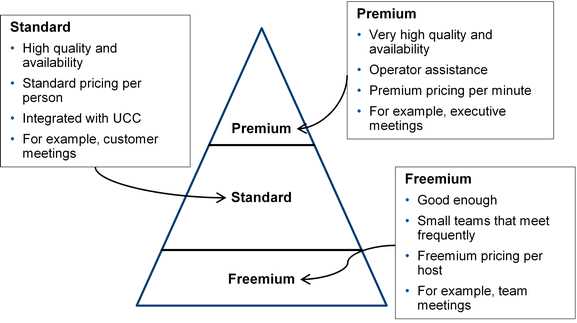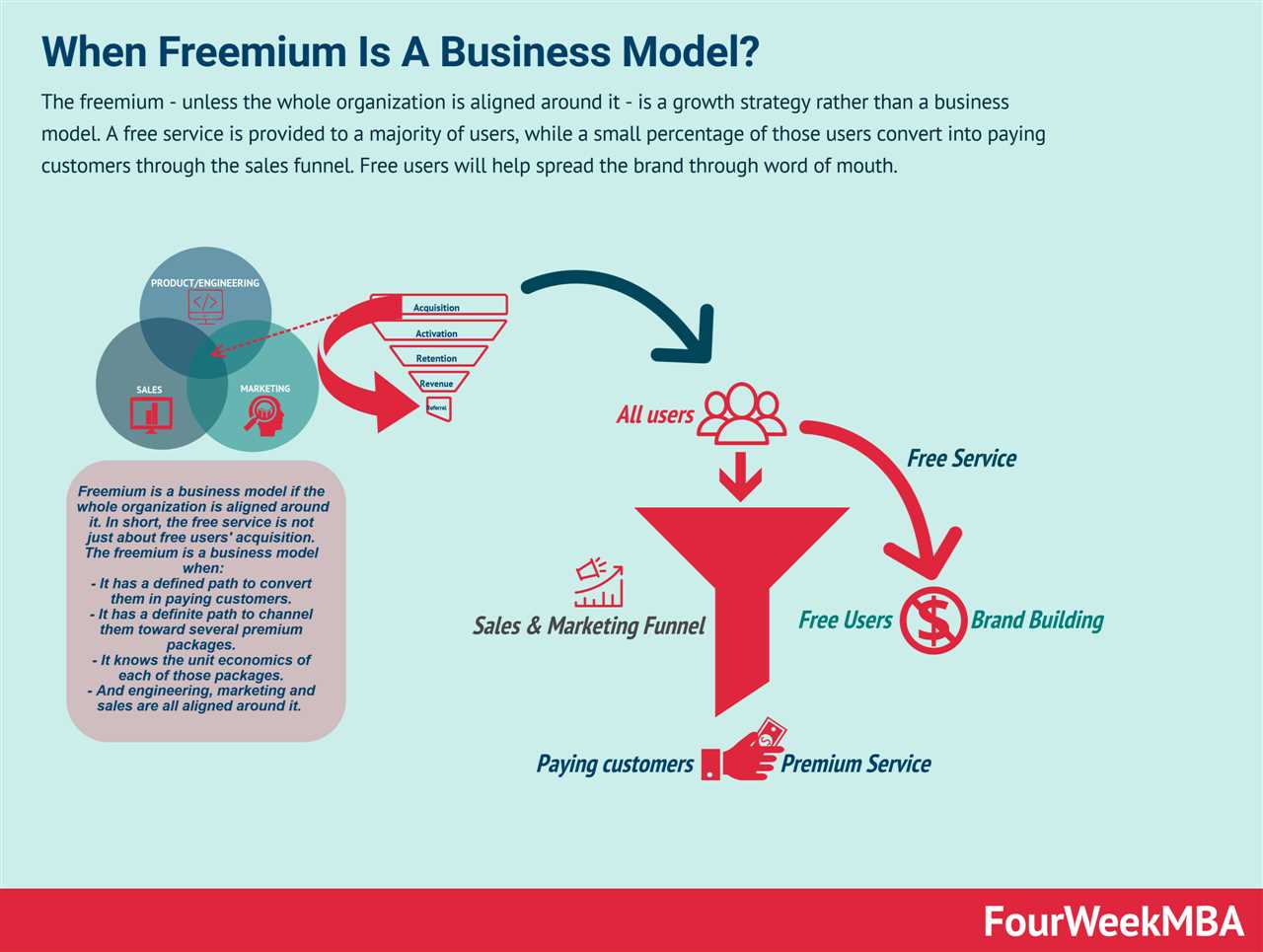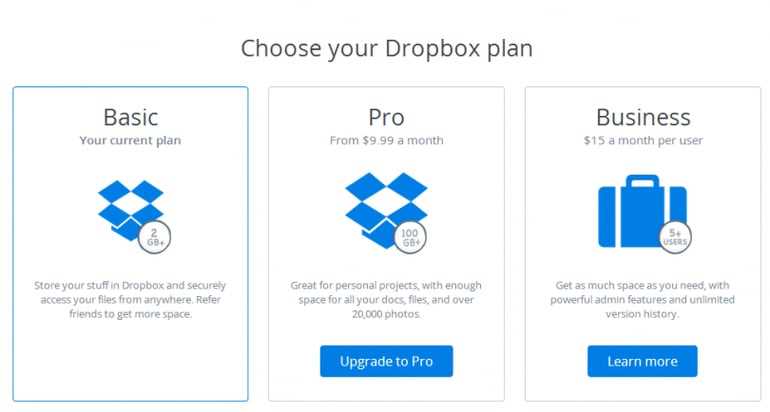What is Freemium?

Freemium is a business model that offers a combination of free and premium services or products to customers. It is a marketing strategy where companies provide basic features or services for free, while charging for additional or advanced features. The term “freemium” is a combination of the words “free” and “premium”.
The basic idea behind the freemium model is to attract a large user base by offering a free version of the product or service. This allows companies to build brand awareness, gain user trust, and establish a customer base. Once users are familiar with the product and see its value, they may be more willing to upgrade to the premium version, which offers enhanced features, additional functionality, or an ad-free experience.
Freemium models are commonly used in various industries, such as software, mobile apps, streaming services, and online platforms. Examples of freemium models include popular services like Spotify, Dropbox, and LinkedIn.
One of the key benefits of the freemium model is its ability to lower the barrier to entry for customers. By offering a free version, companies can attract a larger audience who may not be willing to pay upfront for a product they are unfamiliar with. This allows users to try out the basic features and experience the value of the product before deciding to upgrade.
However, there are also challenges and considerations associated with the freemium model. Companies need to carefully balance the features offered in the free version to ensure it provides value without cannibalizing the premium version. Additionally, companies need to have a clear monetization strategy in place to convert free users into paying customers.
Freemium is a business model that offers a basic version of a product or service for free, while charging for additional features or premium content. This strategy aims to attract a large user base by eliminating the barrier of entry and enticing users to upgrade to a paid version for enhanced functionality or exclusive content.
There are numerous examples of companies successfully implementing the freemium model. One notable example is Dropbox, a cloud storage platform that offers a certain amount of storage space for free, but charges for additional storage. Another example is Spotify, a music streaming service that provides a free version with ads, but offers a premium subscription without ads and with additional features.
The freemium model offers several benefits for businesses. Firstly, it allows companies to reach a wider audience by offering a free version, which can lead to increased brand awareness and user acquisition. This can be especially beneficial for startups or new products trying to gain traction in the market.
Additionally, the freemium model can serve as a powerful marketing tool. By providing a free version, companies can showcase the value and quality of their product or service, enticing users to upgrade to a paid version. This can lead to higher conversion rates and increased revenue.
Furthermore, the freemium model can foster customer loyalty and retention. Users who have already experienced the basic version of a product or service are more likely to continue using it and become paying customers. This can result in a steady stream of recurring revenue and long-term customer relationships.
However, the freemium model also has its drawbacks. One major challenge is finding the right balance between the free and paid features. Companies need to ensure that the free version is valuable enough to attract users, but also offer enough incentives for them to upgrade to the paid version. This requires careful consideration and constant monitoring of user feedback and behavior.
Another challenge is monetization. While the freemium model can be successful, it relies on a small percentage of users converting to paid customers. Companies need to carefully analyze their user base and conversion rates to ensure profitability and sustainability.
Freemium in Business

Freemium is a business model that offers a basic version of a product or service for free, while charging for additional features or premium content. It has gained popularity in recent years as a way for companies to attract and retain customers, as well as generate revenue.
One of the main benefits of the freemium model is that it allows companies to reach a larger audience. By offering a free version of their product or service, companies can attract users who may not be willing to pay for the full version. This can help increase brand awareness and create a larger user base.
Another advantage of the freemium model is that it allows companies to upsell and cross-sell to their free users. By offering additional features or premium content for a fee, companies can generate revenue from users who are already familiar with their product or service. This can be a more cost-effective way to acquire new customers compared to traditional marketing methods.
However, there are also some challenges and considerations when implementing a freemium model. One of the main challenges is finding the right balance between the free and premium features. Companies need to ensure that the free version provides enough value to attract users, while also offering enough incentives for users to upgrade to the premium version.
The Pros and Cons of Freemium Model for Companies

The freemium model is a popular business strategy that offers a basic version of a product or service for free, while charging for premium features or additional functionality. This approach has both advantages and disadvantages for companies, which should be carefully considered before implementing a freemium model.
Pros:
1. Customer Acquisition: One of the main benefits of the freemium model is its ability to attract a large number of users. By offering a free version of the product, companies can reach a wider audience and increase brand awareness. This can lead to a higher customer acquisition rate and potentially more paying customers in the long run.
2. Upselling Opportunities: Freemium models provide companies with the opportunity to upsell premium features or additional services to free users. By offering a taste of the product for free, companies can entice users to upgrade to the paid version, generating additional revenue. This can be an effective way to monetize a user base and increase overall profitability.
3. Market Testing: By offering a free version of a product, companies can gather valuable data and feedback from users. This can help them understand user preferences, identify areas for improvement, and make informed decisions about product development and marketing strategies. Freemium models allow companies to test the market and make necessary adjustments before investing heavily in a product or service.
Cons:
1. Costs and Revenue: Implementing a freemium model can be costly for companies. Providing a free version of the product requires resources for development, maintenance, and customer support. Additionally, the conversion rate from free to paid users may be low, resulting in lower revenue compared to other pricing models. Companies need to carefully analyze the potential costs and revenue implications before adopting a freemium model.
2. User Expectations: Offering a free version of a product can create certain expectations among users. They may become accustomed to the free features and be reluctant to pay for additional functionality. This can make it challenging for companies to convince users to upgrade to the paid version. It is important for companies to clearly communicate the value proposition of the premium features and differentiate them from the free version.
3. Competitive Landscape: The freemium model has become increasingly popular, resulting in a highly competitive landscape. Users have access to a wide range of free products and services, making it challenging for companies to stand out and attract paying customers. Companies need to carefully consider their target market, competition, and differentiation strategies to succeed in a crowded freemium market.
Freemium: A Must-Have Strategy for Business Essentials

Freemium is a business model that has gained significant popularity in recent years. It offers a combination of free and premium services to customers, allowing them to experience the basic features of a product or service without any cost. This strategy has proven to be highly effective in attracting a large user base and converting them into paying customers.
Freemium works by offering a basic version of a product or service for free, with limited features or functionality. This allows users to get a taste of what the product or service has to offer, creating a sense of value and building trust. Once users are hooked and see the value in the free version, they are more likely to upgrade to the premium version, which offers additional features and benefits for a fee.
One of the key advantages of the freemium model is its ability to attract a large user base. By offering a free version, businesses can reach a wider audience and generate brand awareness. This can be particularly beneficial for startups or new businesses looking to establish themselves in the market.
The Pros and Cons of Freemium
There are several advantages to adopting a freemium strategy. Firstly, it allows businesses to build a user base quickly and efficiently. By offering a free version, businesses can attract a large number of users who can then be converted into paying customers. This can lead to increased revenue and profitability in the long run.
Secondly, the freemium model allows businesses to showcase the value of their product or service. By offering a limited version for free, businesses can demonstrate the benefits and features of their offering, creating a sense of value and trust with potential customers.
However, there are also some drawbacks to the freemium model. One of the main challenges is converting free users into paying customers. While a large user base is beneficial, businesses need to find effective ways to monetize their free users and encourage them to upgrade to the premium version. This can require a well-designed pricing strategy and effective marketing tactics.
Another challenge is finding the right balance between the free and premium versions. Businesses need to ensure that the free version offers enough value to attract users, but also leaves room for additional features and benefits in the premium version. This can require careful planning and market research to understand customer preferences and expectations.

Emily Bibb simplifies finance through bestselling books and articles, bridging complex concepts for everyday understanding. Engaging audiences via social media, she shares insights for financial success. Active in seminars and philanthropy, Bibb aims to create a more financially informed society, driven by her passion for empowering others.
